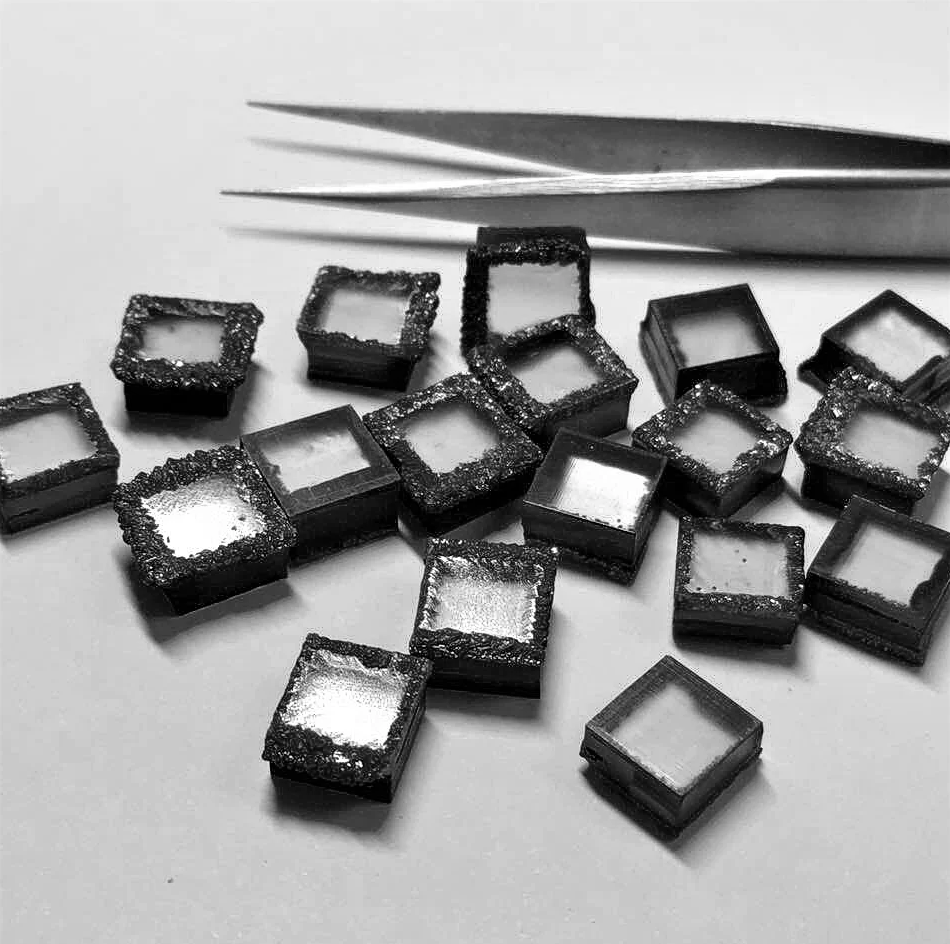The Process
The process begins with a small diamond seed crystal, which is often a tiny piece of an existing diamond.
This seed crystal will serve as the foundation for the growth of the new diamond. The two methods used to grow a lab diamond are High-Pressure, High-Temperature (HPHT) Method or Chemical Vapour Deposition (CVD):
HPHT Method: In this method, the seed crystal is placed in a press that simulates the high-pressure and high-temperature conditions found in the Earth’s mantle.
Under intense pressure and heat, carbon atoms in the surrounding material start attaching to the seed crystal and crystallising, forming a larger diamond.
CVD Method: In this method, a small amount of carbon-rich gas (like methane) is introduced into a chamber.
The gas is then ionised using microwaves, creating a plasma. The carbon atoms from the plasma bond together, layer by layer, on the seed crystal, gradually forming a diamond.
Diamond Growth:
The timeframe for growing a 1-carat diamond depends on whether it’s natural or lab-grown:
Natural Diamonds:
These take a significantly longer time due to the intense pressure and heat required for natural formation. Estimates range from 1 to 3.3 billion years!
Lab-Grown Diamonds:
generally take 3 weeks to 1 month per carat to grow.
Other factors can influence the time, such as:
Desired size and color: Larger and rarer colors take longer.
Production technology: Newer equipment might be faster.
Number of diamonds grown simultaneously: Growing multiple at once can be efficient.
The controlled environment allows for the manipulation of conditions, resulting in the formation of high-quality diamonds with fewer impurities.
Cooling and Diamond Extraction:
Once the diamond reaches the desired size, the high pressure and high temperature are gradually reduced.
The diamond is then carefully extracted from the growth chamber.
Cutting and Polishing:
The rough diamond obtained from the growth process is cut and polished using traditional diamond cutting techniques.
This step enhances the diamond’s brilliance and reveals its final shape.
Grading and Certification:
The lab-grown diamond is then subjected to the same rigorous grading standards as mined diamonds.
Organisations like the Gemological Institute of America (GIA) provide certifications based on the diamond’s cut, color, clarity, and carat weight.
Benefits of Lab-Grown Diamonds:
Ethical and Environmental Considerations: Lab-grown diamonds are often considered more ethical and environmentally friendly because they are produced in controlled environments, reducing the environmental impact associated with traditional diamond mining.
Cost: Lab-grown diamonds are almost always more cost-effective compared to earth diamonds.

